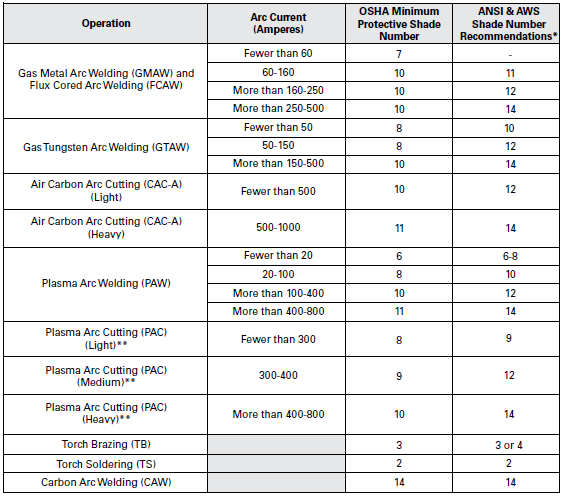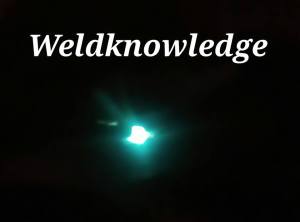OSHA (Occupation Health and Safety Administration) has mentioned minimum protective shade number of welding glass for different welding processes and respectively for different current range.
What is Shade number???
Electromagnetic energy given off by an arc or flame can injure eyes and is commonly referred to as radiant energy or light radiation. A shade number indicates the intensity of light radiation that is allowed to pass through a filter lens to one’s eyes. Therefore, the higher the shade number, the darker the filter and the less light radiation that will pass through the lens.
The tables below list the minimum protective lens shade numbers for commonly used welding and cutting processes.

For Shielded Metal Arc Welding (SMAW) process

For other welding and cutting processes
* As a rule of thumb, start with a shade that is too dark to see the weld zone. Then, go to a lighter shade which gives a sufficient view of the weld zone without going below the minimum.
** Values apply where the actual arc is clearly seen. Lighter filters may be used when the arc is hidden by the workpiece.
Reference: OSHA fact sheet
Keep reading, Happy welding
Thank you,
KP Bhatt

